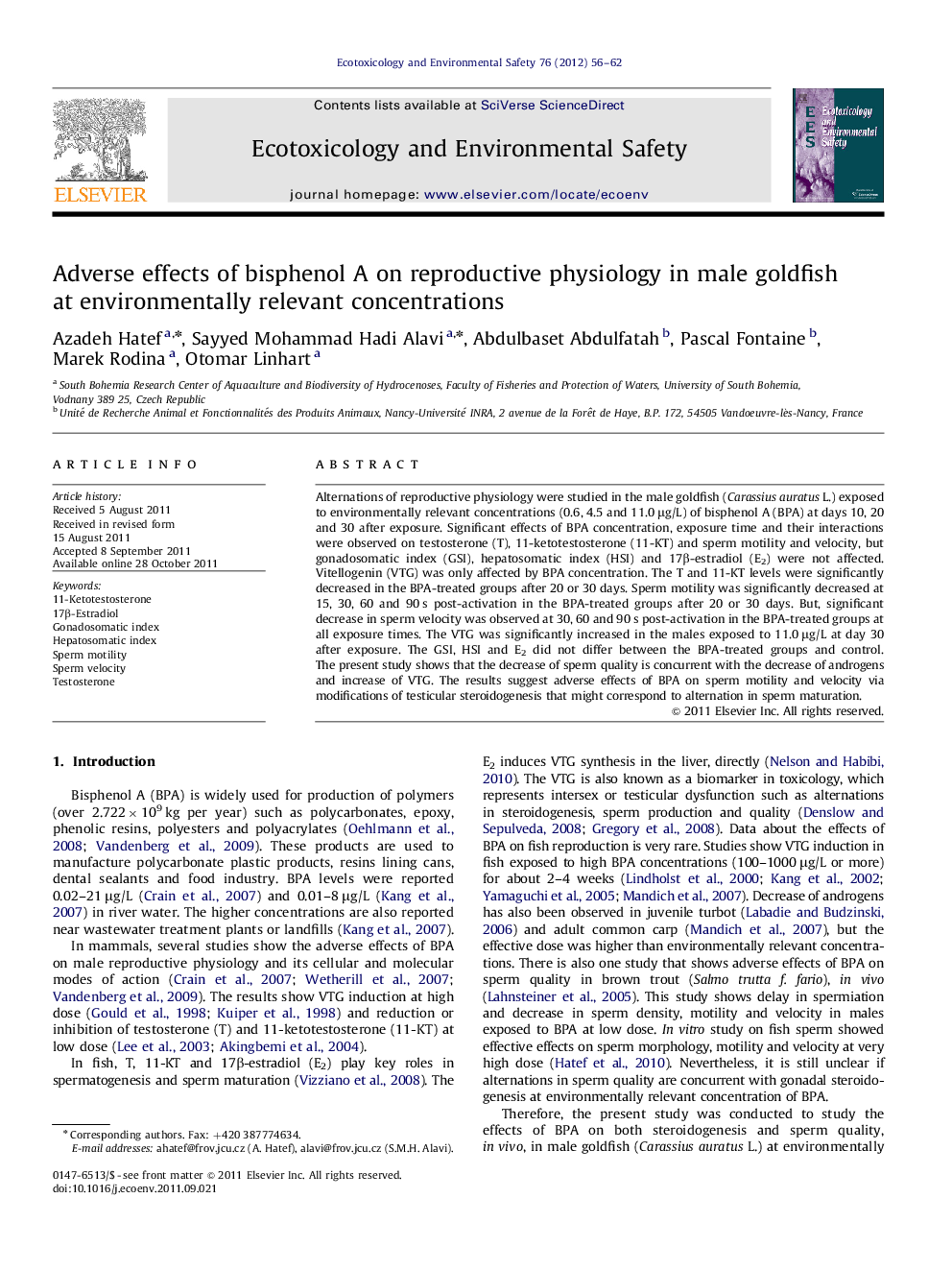| Article ID | Journal | Published Year | Pages | File Type |
|---|---|---|---|---|
| 4420939 | Ecotoxicology and Environmental Safety | 2012 | 7 Pages |
Alternations of reproductive physiology were studied in the male goldfish (Carassius auratus L.) exposed to environmentally relevant concentrations (0.6, 4.5 and 11.0 μg/L) of bisphenol A (BPA) at days 10, 20 and 30 after exposure. Significant effects of BPA concentration, exposure time and their interactions were observed on testosterone (T), 11-ketotestosterone (11-KT) and sperm motility and velocity, but gonadosomatic index (GSI), hepatosomatic index (HSI) and 17β-estradiol (E2) were not affected. Vitellogenin (VTG) was only affected by BPA concentration. The T and 11-KT levels were significantly decreased in the BPA-treated groups after 20 or 30 days. Sperm motility was significantly decreased at 15, 30, 60 and 90 s post-activation in the BPA-treated groups after 20 or 30 days. But, significant decrease in sperm velocity was observed at 30, 60 and 90 s post-activation in the BPA-treated groups at all exposure times. The VTG was significantly increased in the males exposed to 11.0 μg/L at day 30 after exposure. The GSI, HSI and E2 did not differ between the BPA-treated groups and control. The present study shows that the decrease of sperm quality is concurrent with the decrease of androgens and increase of VTG. The results suggest adverse effects of BPA on sperm motility and velocity via modifications of testicular steroidogenesis that might correspond to alternation in sperm maturation.
► Bisphenol A affects reproductive physiology in male goldfish, in vivo. ► BPA caused decrease of androgens and sperm quality and increase of vitellogenin. ► Decrease of sperm quality and androgens were observed at the same exposure time. ► BPA may act on sperm motility and velocity through alternations of sperm maturation.
